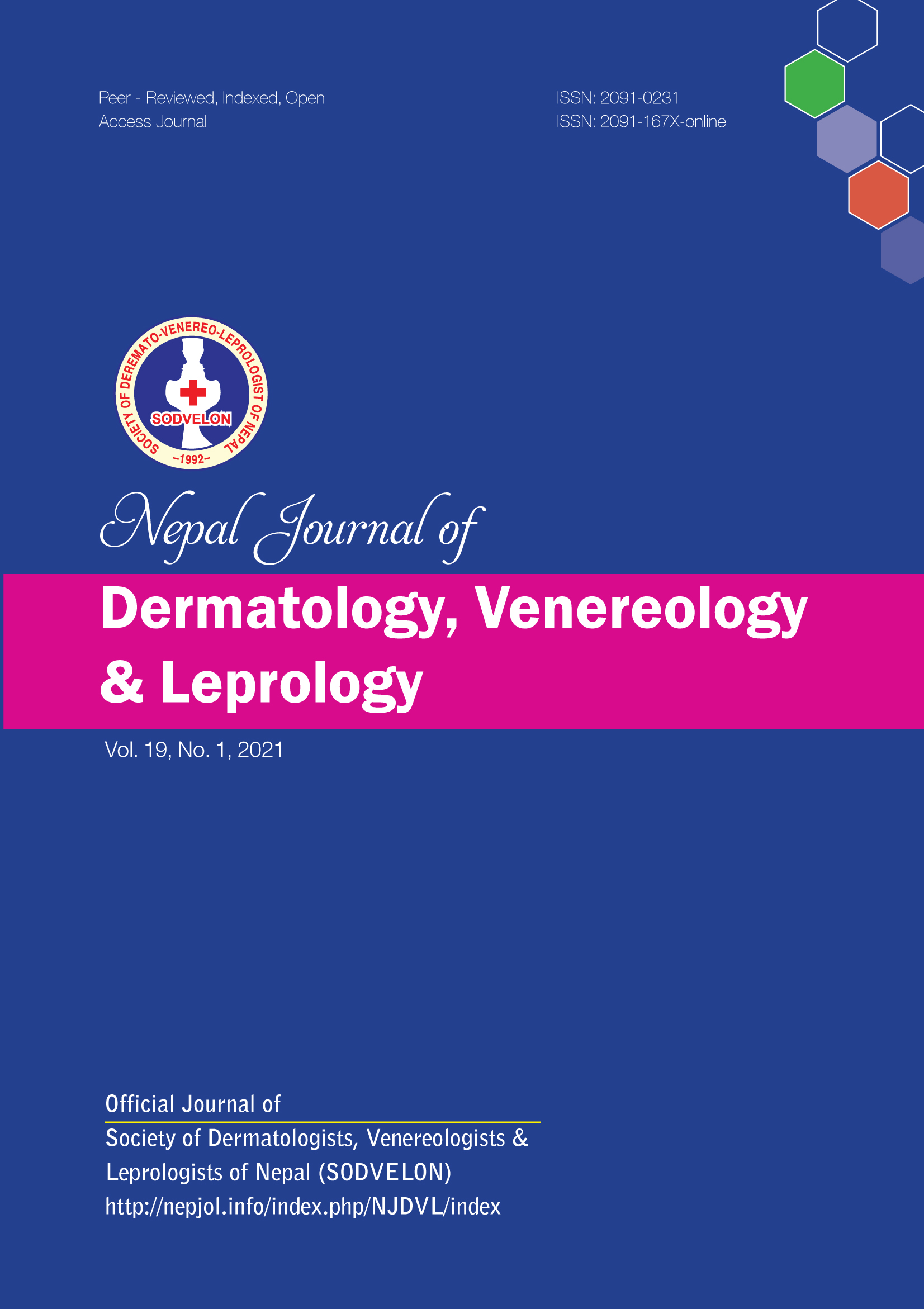Steroid-induced Rosacea- A Study From a Tertiary Care Hospital of Eastern Nepal
DOI:
https://doi.org/10.3126/njdvl.v19i1.35952Keywords:
Misuse, Steroid Induced Rosacea, Topical CorticosteroidsAbstract
Introduction: Topical corticosteroids (TC) are useful for treatment of various dermatological conditions in all age groups. Due to its cosmetic application TCs misuse is intertwined with fairness creams in our colour conscious society where people are obsessed with fair colour.
Aims and Objectives: To find the clinical presentations of steroid induced rosacea like-dermatitis on the face and to evaluate the purpose behind misusing TCs on the face.
Materials and methods: Descriptive prospective questionnaire-type case series study was approved by Institutional Ethical Committee of BPKIHS which involved 205 patients diagnosed as Steroid Induced Rosacea who consulted Dermatology OPD between March to June 2017.
Results: Among 205 patients enrolled, majority were from second to fourth decade (87.31%) of their life and maximum being females I.e. 91.2%. Around 97% of the study population were unaware of side effects of TCs. Most patients use Mometasone fuorate (58.04%) for melisma (88.29%). Friends acted as source of prescription (29.75%), followed by Pharmacist (24.88%) & Beauty centers (20%). Dermatologists prescribed TCs in only 6.34% cases. Sun exposure was identified as the triggering factor for steroid induced rosacea in 73.17% patients. Cheek was the commonest site involve in 92.19%, followed by forehead (65.36%), perioral area (46.83%), and chin (9.75%). Mixed type of lesions was the commonest lesion found in 52.20% patients, followed by diffuse facial erythema (36.09%), & telangiectasia (33.17%).
Conclusion: TCs misuse in the younger people for the sake of fairer skin with little or no knowledge about the adverse effects of this medication should be stopped.
Downloads
Downloads
Published
How to Cite
Issue
Section
License
Copyright on any research article is transferred in full to Nepal Journal of Dermatology, Venereology & Leprology upon publication. The copyright transfer includes the right to reproduce and distribute the article in any form of reproduction (printing, electronic media or any other form).




